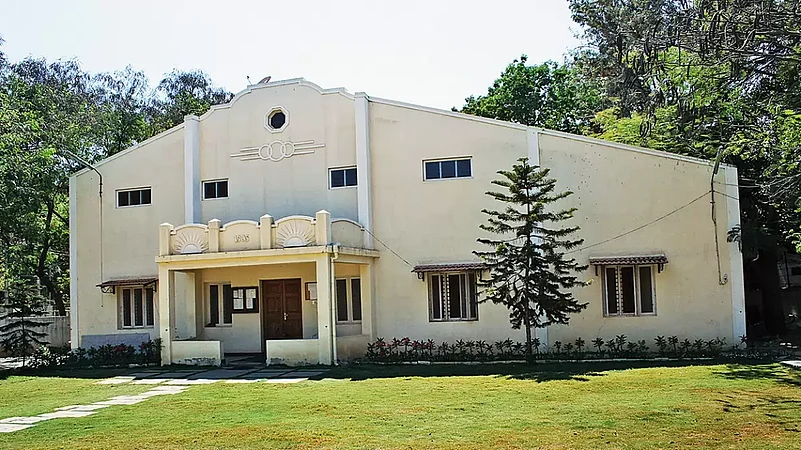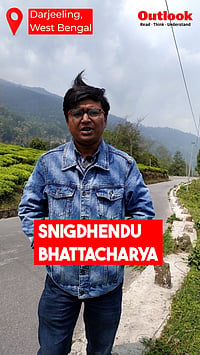These days it’s rare to spot Anglo-Indians in railway colonies, and old settlements such as Kolar Gold Fields, Clement Town, McCluskieganj and Whitefield. The old settlements have almost disappeared and the population in urban pockets is, as scholars theorise, dwindling.
I visit Facebook at times and I’m surprised to find Anglo-Indians virtually everywhere yet nowhere. From being stateless to minuscule, are we now only a footfall away from becoming a ghost community?
Many Anglo-Indians are seeking answers, especially the younger ones. Yes, there are more questions than answers. Questions have hung in the air for quite a while now. Some defogging needs to be done. Anglo-Indians are peace-loving by nature. They are urban dwellers and maintain homes strongly influenced by the West. No matter what their socio-economic status is, they are extremely friendly, hospitable and very much apolitical. But it is not enough for a community to be genial; it should also be vigilant in order to survive.
Advertisement
Sir Henry Gidney, the leader before Frank Anthony who unified the community so well, did his best to ensure safeguards for Anglo-Indians at every opportunity. He represented the community at the Simon Commission in 1928 and at the Round Table Conference in London in 1930-31, and used the occasions to seek assistance for the creation of a separate ‘province’ for the community. Though Anglo-Indians numbered more than six lakhs before Independence, it was mere wishful thinking.

Thanks to Ernest Timothy McCluskie, a Calcutta-based real estate agent, the dream became a reality in the 1930s. McCluskieganj was born and grew into an Anglo-Indian settlement in the Chota Nagpur hills; this effort attempted to liberate the community members both from British patronage and from Indianisation. It was an Anglo-Indian homeland that would last forever. Or so they believed.
Advertisement
In a speech to Anglo-Indians in Calcutta in May 1938, Gidney described McCluskieganj as “A home for Anglo-Indians under the sun of India, their motherland, an effort at self-help which will command the respect and admiration of our compatriots, a colony worthy of the traditions of our forefathers, a concrete evidence of our affection for the land of our birth, and a memory to the blood of our mothers and grandmothers which runs in our veins.”
Gidney, who was the president of the All India Anglo-Indian Association, went on to further say, in 1939, “Here we have the opportunity to make good, here we have the making of an Anglo-Indian State and here we have the creation and moulding of our mooluk (country). No more will we look at the map of India and say to ourselves ‘Wither shall we go?’ ”
But after India gained Independence, Anglo-Indians started to leave the country in droves seeking greener pastures. Going away and heading for the UK, Australia, New Zealand and Canada was perceived as a good option then. These days, for most of us who live in India, emigrating is a choice and not a necessity.
Initially after 1947, many were uncertain of their future in the land of their birth but soon came to understand that they were accepted by mainstream India. They were comfortable with life as it turned out. They got good jobs in all sectors because of their proficiency in the English language and their easy-going demeanour. Anglo-Indians made outstanding contributions to India in various fields—contributions that go far beyond the community’s proportion in terms of their small numbers. They have passed down strong work ethics, integrity, familial love, and sincere Christian faith to their families from generation to generation.
Advertisement
Apart from their sincerity and devotion to their jobs in the Railways, Police, Defence Forces, Customs and other departments, the Anglo-Indian community is well-known for its most significant contribution to India—school education. Over the years, Anglo-Indian schools across our country have become synonymous with excellence in education which can be attributed to Anglo-Indian principals and teachers who have a knack for teaching.
School education was a passion of Frank Anthony. He was the chairman of the Council for the Indian School Certificate Examination (CISCE). He was also the founder of Anglo-Indian schools in Delhi, Kolkata and Bengaluru that bear his name—The Frank Anthony Public Schools. Apart from being a bar-at-law and a Member of Parliament, Anthony was one of the founding members of the Constituent Assembly, a parliamentarian of long experience and an accomplished jurist. He was a member of the National Defence Council from 1964 to ‘93, and also a member of the National Integration Council since its inception in 1961.
Advertisement
Another Anglo-Indian leader one must acknowledge is the charismatic David Emmanuel Starkenburg White. He was born in 1832, the son of an apothecary at the Madras Medical Department and attended St. Andrew’s Parochial School. White encouraged the then Eurasians of Madras to constitute an association. In 1879, a meeting was convened under the Chairmanship of the Hon’ble Sir Charles Turner, the then Chief Justice of Madras. The Eurasian and Anglo-Indian Association of Southern India was formed for the promotion of the social, moral and intellectual advancement of the community. Today it’s known as the Anglo-Indian Association of Southern India.
Advertisement
Acting in the capacity of Founder-President of the Association, White submitted the members’ names to the concerned authorities to constitute the First Volunteer Corps of India. This unit is still known as the Madras Guards. White put all his energy into working for the community and was involved in many noteworthy projects. He is credited with being the driving force behind the raising of funds for the construction of the Victoria Public Hall in Madras. He was a keen environmentalist and urged not only Anglo-Indians but other communities as well to acquire roof trees and benefit from being one with Mother Nature.
Advertisement
Among many other ideas that White had envisioned for the betterment of Anglo-Indians, the one that truly stands out was his involvement in the Whitefield Settlement which was named after him and has become part of Bengaluru. On 27 April 1882, the Maharaja of Mysore made a grant of 3,900 acres of land to the Eurasian and Anglo-Indian Association of Southern India to establish agricultural settlements at Whitefield that the community members could call their own. David White took a keen interest in the settlement’s advancement.
In the early 1900s, there were around 130 permanent residents at Whitefield and this number gradually increased. Some of the houses were situated on the village site and some were on various farmlands fit for cultivation. The red sandy loam soil was suitable for horticulture and the growth of mango trees. Since the Whitefield railway station is not too far away from the settlement, it proved to be a boon for the residents as well as visitors and traders. Two circular roads lined with trees on either side were built for the convenience of the people who lived there. The village formed a large circle of 1,500 feet in diameter with houses built on the circumference.
Advertisement
Since religion played an important role in the lives of Anglo-Indians, Protestant and Roman Catholic Churches were constructed nearby for spiritual comfort. The Association’s members had thought of many necessities and comforts for the residents: a school, post office, dispensary, playground, lawn tennis courts, provision stores, an inn called Waverly for the weary traveller, a football and a cricket ground which were quite popular with the young and old. They even ran a circulating book library for the literary-minded.
At one point in time, the settlement must have looked very pretty. Anglo-Indians loved to keep good homes and maintained gardens much to the envy of all visitors. And with Whitefield’s cool and bracing temperature, the settlement always had its fair share of tourists.
Advertisement
Many Anglo-Indian men who lived in Whitefield used to work at the mines in the Kolar Gold Fields which were not too far away. Others used to earn a living by rearing poultry and sheep. A make-shift weekly market or ‘Shandy’ in Whitefield was quite popular with the residents selling their produce to people who came in from neighbouring villages. The cost of living was much less than in other places and this attracted many, from even northern India to seek and buy land, cottages or farms in Whitefield. A little-known fact is that a detachment to the Bangalore Rifle Volunteers was formed and raised in Whitefield in 1899.
Advertisement
Whitefield today has changed almost completely. One cannot recognise the settlement. The two parallel circular roads and the sprawling colonial-style bungalows are nowhere to be seen. Progress has put a stop to a unique lifestyle that was enjoyed by a microscopic community once upon a time. High-rise buildings and IT companies have mushroomed all over the land of our dreams. Tech parks, posh layouts, super malls and crowds have robbed Whitefield of its soul.
Our existence is being redefined and re-examined now. The dream of a homeland for Anglo-Indians has disappeared into the mists of time. Personally, I am optimistic: we won’t be seen in the pages of history books, not in the near future. We will still be alive and kicking in India as a community. I have great hope for our youth. They are the foundation and future of our next generation. I’m certain young Anglo-Indians will carry on very well after us.
Advertisement
(This appeared in the print edition as "Wither Shall We Go?")
(Views expressed are personal)
Harry MacLure is the editor of the magazine Anglos In The Wind and co-author of the book The Anglo-Indians—A 500-Year History




















